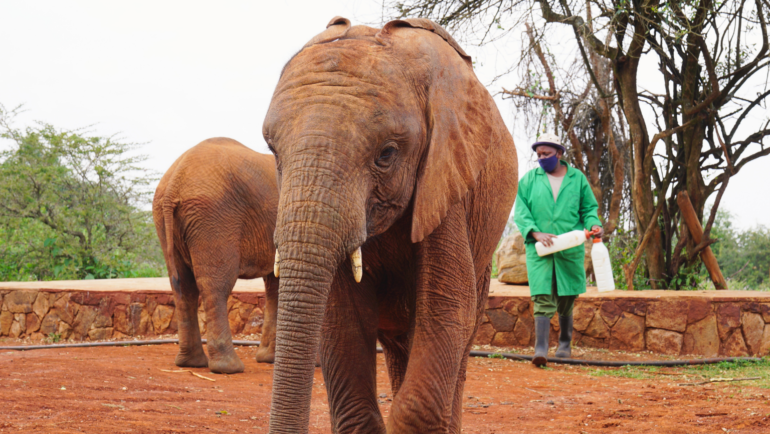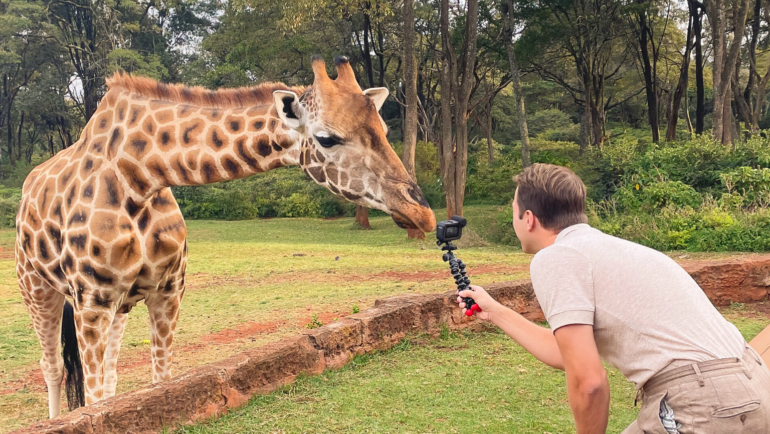Whether you rely on your smartphone or prefer to juggle a massive zoom lens; more people than ever are photographing animals! With this surge in pictures snapped comes the responsibility of practicing ethical habits for wildlife. No matter if you consider yourself an amateur, professional, or even call yourself a photographer at all – if you are taking pictures of animals then it is your responsibility to help keep them safe!
Sadly, one could write a never-ending list of unethical practices for wildlife photography. There are unlimited ways that humans can disturb and even harm wild animals. Because of this harsh reality, it is challenging to define what is unethical in wildlife photography. Regardless, we must share a consistent standard to support positive outcomes for people and wildlife. By using the following ethical practices when photographing wildlife, we can better promote ecotourism that preserves nature.
10 Practices for Ethical Wildlife Photography
1.) Animals ALWAYS Come First
Whether you are capturing moments in your backyard or on safari a world away, the needs of wild animals must come first. All wildlife photographers must understand that their presence can be extremely disruptive to nature and that limiting our disturbance is top priority. Our goal is to do no harm and simply let the animals go about their days naturally. Unfortunately, many tourists use noises, like whistling or banging on the sides of vehicles, to get the attention of animals for their perceived perfect shot. These seemingly simple actions can create negative behavior changes in wildlife. By respecting their needs and placing them over our own, we can help to support wildlife. Additionally, there isn’t a more prideful photo than one captured organically.
2.) Provide Animals Plenty of Space
When we provide animals plenty of personal space, we help to prevent over-habituating them to humans. Strive to stay on designated roads, paths, and trails to minimize your disturbance. An ethical rule of thumb to practice is instead of inching closer to wildlife, bring the necessary equipment to zoom into the moment from afar. The amount of space between you and your subject depends greatly on the species you are photographing. Knowing the general behaviors of the animals you are photographing will help you identify stress responses to ensure your presence is welcomed. Signs of stress can be a clear indicator that you need to slowly back off and give the animal more personal space. If you see other photographers not respecting an animals’ space, be brave and speak up. Always advocate for minimizing the stress of your wild subjects.
3.) No Sharing Snacks
Most animals cannot refuse a free snack, but associating humans with food is dangerous for both humans and wildlife. Feeding animals automatically alters their wild behaviors. Baiting wildlife can cause individuals to become aggressive over food and learn unnatural begging behaviors. Additionally, feeding causes animals to draw closer to unsafe developed areas, and can cause serious health issues. In many cases, animals become increasingly bold in approaching people for food, which can lead to conflict causing wildlife managers to kill certain animals. Baiting wildlife should always be avoided.
4.) Blend in with Nature
The goal of ethical wildlife photographers is to go largely unseen and unheard. The responsibility of letting animals behave naturally falls on us. Best photos are often captured when we are quiet and simply blending into the environment. Just let nature unfold around you. Remember you are a guest in these places – be on your best behavior.
5.) Rules Rule
No matter where you are photographing wildlife make sure to brush up on local rules and regulations. Laws vary by location and by species. Wherever you go, always follow the local guidelines to help protect yourself and the wildlife.
6.) Go SLOW
Quality wildlife photography is never rushed. Instead, take your time and be patient. Being a photographer is not always about getting THE perfect shot. Be present and in the moment. By keeping a slow pace, you allow yourself time for observation and reflection. Often a slowed pace means that wildlife will ignore your presence and instead go about their lives naturally.
7.) Get a Guide
If you are shooting in an unfamiliar location you might want to find an ethical guide who knows the location well. A quality guide will make sure you are safe while also ensuring that ethical practices are exercised during your excursion.
8.) Protect Them
It is our duty to help protect the animals we are photography. Sadly, this means responsibly sharing our images. If you have captured images of a threatened or endangered species make sure to be cautious of where you share those images. Many poachers and traffickers are using social media posts from tourists to target and locate an animal’s location. Simply refrain from sharing the precise location of where your images were taken.
9.) Stay Wild
Never use wildlife performers as photo subjects. Photography game farms work to create a misleading illusion by staging captive animals among natural settings. Outfits like these purchase and breed animals just to profit off them. To deter abusive practices like these, many publications and photo contests prohibit shots taken at photography game farms. Beware of facilities falsely labelled as refugees, orphanages, or sanctuaries. Do your research to ensure that any location you are shooting at is truly ethical. Best practice is to ethically photograph animals in their natural wild habitats.
10.) Inspire Conservation
Your wildlife photography has the power to inspire others. Who knows you might even go viral and help bring much-needed attention to the wildlife you have photographed. Compelling images can be an essential tool in connecting the public to organizations that protect wildlife. Use images you have captured to help share a story about species and habitats in need of conservation. Sharing and donating your work to non-profits and research organizations can help conservationists identify individual animals and engage communities to support their efforts in protecting wildlife.
All wildlife photographers should pride themselves in practicing photography techniques that respect their subjects. The ethical wildlife tour company, Salva Fauna, says it best with this sentiment; “The welfare of our wild friends is and will always be more important than the beautiful pictures we can take.” Jonathan Guillot, President of Salva Fauna went further sharing;
“The most important moment to me is always the present moment. Images always come as a bonus to a great sighting. Often now I don’t even lift the camera, I just fully immerse myself in the moment with the animal, connecting deeply with my environment. I feel like we miss that so much nowadays as a species. We slowly forget what nature really is. But to reverse the trend of biodiversity loss, we would need to experience nature not only as a nice moment during the weekend, but as a deep emotional connection that shapes our daily lives.”
-Jonathan Guillot, President of Salva Fauna





























